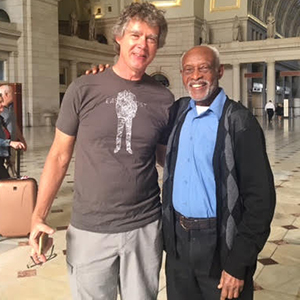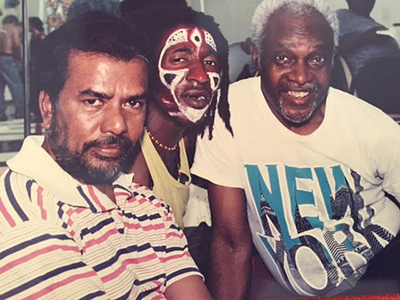By Francis Quamina Farrier
WITH Guyana celebrating its 48th anniversary of Republican status, I decided to investigate the current image of our beautiful country within Southern Africa that came about due to the recent resignation of the President of South Africa, Jacob Zuma, at the behest of his own political party, the ANC. President Zuma was accused of widespread corruption, and his own political party decided to instruct him to resign, which he did. Interesting, isn’t that?

As would be recalled, I wrote an article in the Chronicle Pepperpot of August 27, 2017, which had the Headline, “The New Guyana/South Africa Connection”. In that article, I reported the accreditation of Dr Kenrick Hunte, as Guyana’s first Resident Ambassador to the Republic of South Africa. Over the past six months since Dr Hunte has been in Pretoria, the capital of South Africa, he has been making the image of Guyana better known in the former ‘Land of Apartheid’.
One example is the previous view by South Africans that the international Guyanese Superstar, Eddy Grant, was Jamaican. That was something which Ambassador Hunte corrected. It must be recalled that Eddy Grant composed that powerful anti-apartheid rallying song, “Gimme Hope Jo’anna.” It may seem like a simple issue, but South Africa is very serious about culture and their cultural workers. Back in the 1970s, the internationally famous South African songbird, Miriam Makeba, also composed anti-apartheid songs such as “Mother Africa”.
At one time, the beautiful and charming Miriam Makeba also seemed to have been a candidate for the office of Guyana’s First Lady. Do take note of that Miriam Makeba song, “Tell Me, Mr Man, What you doing, Mr Man”. The lyrics of that Makeba song were (allegedly) specifically intended for Guyana’s President Forbes Burnham, who was a bachelor at the time. Indeed, there seemed to be a romantic connection between Guyana and South Africa.

Something which is of importance is the role which Guyana has played in the Liberation Struggle by Freedom Fighters in South Africa and neighbouring countries such as Angola, Mozambique and Namibia, during the 1960s, the 1970s and the 1980s. Guyana made financial contributions as well as tactical support to the Freedom Fighters, in the struggle to dismantle the brutal system of suppression by Europeans over the Native African Peoples in Africa. Guyana also imposed a ban on any dealings with white minority South African government.
During the decades of Apartheid in South Africa, the suppression of the Indigenous Africans by the Whites was brutal. The country’s indigenous citizens were made to carry ID cards at all times, or risk being thrown into prison. On March 21, 1960, 69 of a large group of demonstrating students, were shot dead by Police; an incident known as the Sharpeville Massacre. As such, Guyana severed all relations with the white minority South African Government. There were no political, economic, cultural or sporting activities with that country by Guyana until Apartheid was totally and permanently dismantled and democracy restored.
With the many years of fighting for their freedom from colonial rule and the brutal oppressive system of Apartheid, countries in Southern Africa finally regained their independence from colonial rule. Since then, countries in Southern Africa, such as Angola, Botswana, Mozambique and Namibia, have all adhered to the democratic system, with general elections being held as stipulated. There has been no coup d’etat in those countries.
Following a recent general election in Angola in September 2017, the 74-year-old President, Jose Eduardo dos Santos, who was in office for over 30 years, stepped aside and handed over the presidency to his selected 63-year-old successor, Joao Lourenco, who is now the president of that oil-rich African nation. Of special note for Guyana, is that with all its oil wealth, a high percentage of Angola’s 13 million population, still live in poverty, something which the new president has vowed to address.
Guyana’s Ambassador to South Africa, Dr. Kenrick Hunte, was in Angola this past week, where on February 22, 2018, he presented his Letters of Credentials as this country’s Non-Resident Ambassador to Angola. Dr. Hunte will, later this year, be accredited to a number of other southern and eastern African nations, including Kenya and Zimbabwe. Meanwhile, the Guyana Embassy in Pretoria, is a home away from home, for Guyanese resident in South Africa, as well as those visiting.
Ambassador Dr. Kenrick Hunte also continues to meet with a wide range of businessmen in South Africa, especially those who are expressing an interest in investing in Guyana.




.png)









